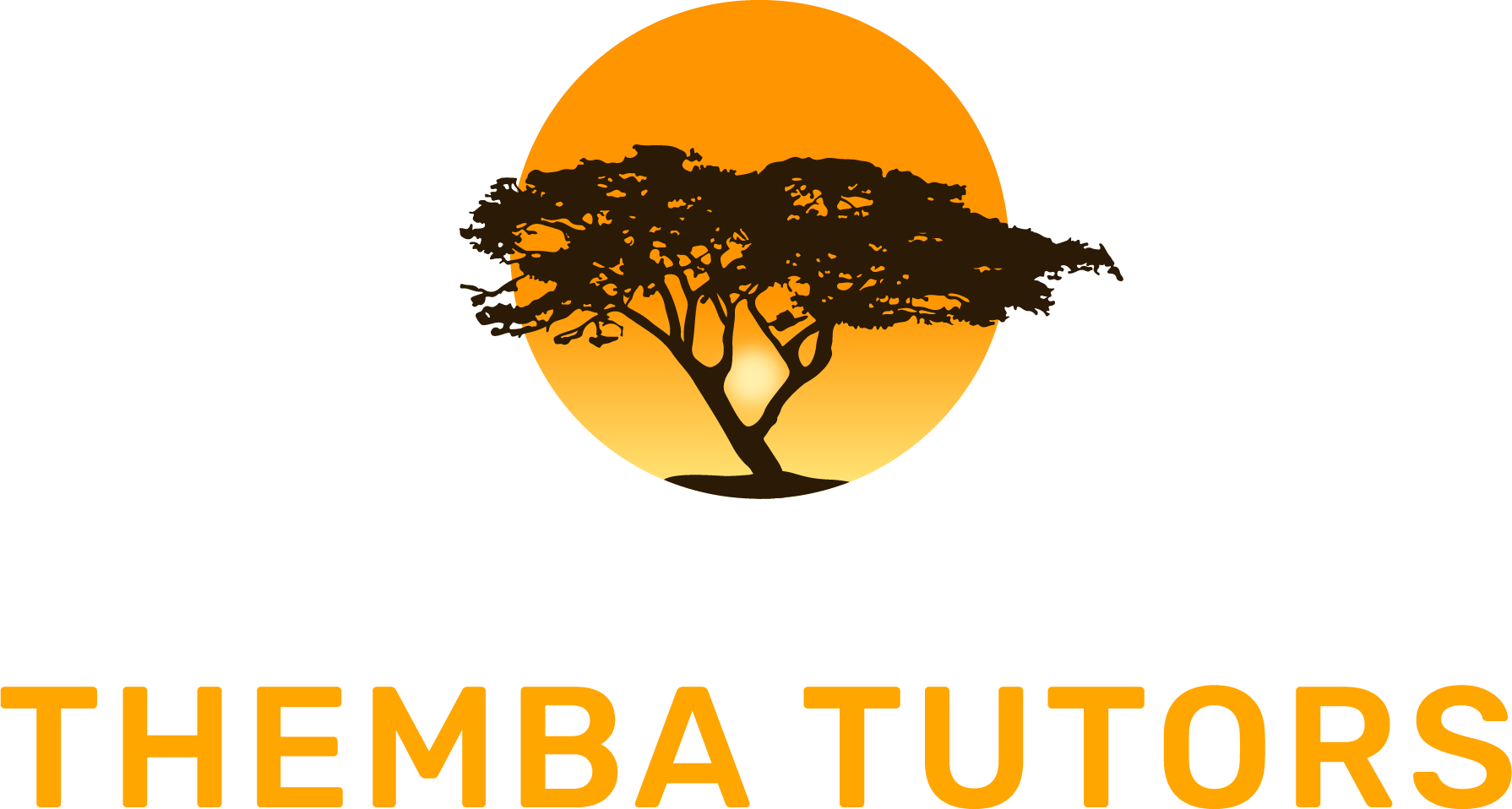Expert ADD Attention Deficit Disorder and ADHD Hyperactive Coaches & Tutors in the NYC Metro Area
Expert ADD Attention Deficit Disorder and ADHD Hyperactive Coaches & Tutors in the NYC Metro Area | At-Home Visits and Free Consultations. PRIVATE PAY TRAVELING TO:

TESTIMONIALS
What Is the Definition of ADD & ADHD?
The terms Attention Deficit Disorder (ADD) and Attention-Deficit Hyperactivity Disorder (ADHD) are often used interchangeably. They are actually the same condition but were once believed to be separate. Over the last three decades, the all-encompassing name officially became ADHD.
While ADHD is diagnosed in childhood, it also occurs in adults, and as an adult, getting an accurate diagnosis can be challenging. Learn more about the ADHD diagnostic process for adults and the next steps for treatment. Here are some differences between an ADHD brain vs. a normal brain and everything you need to know about ADHD. It ultimately affects the development of personal, social, academic, and occupational functioning. Watch this film: Forget Everything You Thought You Knew About ADHD, to learn how having an ADHD brain can actually be an asset when managed effectively. Learn how prompting and fading can help with ADHD management.
Attention Deficit Disorder (ADD) is a neurological problem that causes a scope of issues, such as trouble taking care of guidance, rushing through homework, staying aware of tasks, adhering to directions, turning in homeworks, and social collaboration. Here are the top 6 homework tips for kids with ADHD and the best homework station for a child with ADHD.
ADHD can affect the way students perform in the classroom. Children with ADHD are often singled out by their classmates due to their behavior in the classroom. To keep students with ADHD engaged in the classroom, learn these strategies for ADHD and boredom to engage students. Let’s delve into diverse classroom interventions tailored to meet the specific needs of students with ADHD. Regardless of their age, the symptoms of ADHD can lead to poorer grades and overall learning experience. Discover a few types of ADHD screeners and assessments used to evaluate children for attention deficit hyperactivity disorder symptoms.
While the symptoms of ADHD are usually identified during early childhood, ADHD in school-aged girls are often diagnosed later in life than boys. Learn the 4 ADHD symptoms that can lead to perfectionism. But with the right environment, a student with ADHD can thrive and succeed. Learn some effective transition strategies for students with ADHD that will help them succeed in school, at home, and in life. Understanding and managing ADHD in school is a multifaceted endeavor. Learn how to manage ADHD in school.
Discover proven strategies to improve reading comprehension and fluency in kids with attentional difficulties.
Find out the different ADHD chairs designed to provide supportive and comfortable seating for people with ADHD. Here are the 10 most common 504 accommodations for students with ADHD.
Download our free What is Executive Functioning Pamphlet!
Learn more about What is Executive Functioning?
Find out more about Executive Functioning Coaching!

RHIA
Doctoral Candidate in Clinical Psychology

TOHAR
MA in Clinical Psychology, BS in Integrative Neuroscience

MARIE
Master of Education from Harvard University, Current PhD Student in School Psychology

CAMERON
Master’s Degree in Psychology

JACOB
Masters of Science in General and Special Education

JORDAN
Doctoral Candidate

DUSTY
Master’s in Special Education

MELISSA C.
Master’s in Education for Students with Disabilities

DAVID Y.
Master’s in Teaching, Bachelor’s in Chemistry and Psychology

MELISSA S.
Ph.D. Candidate in School Psychology, Master’s in Special Education
**Guarantee: It’s critical that whoever receives our tutoring services connects with the specialist, the specialist has expertise in the area of need, and is available to travel to you. If you are not 100% satisfied with our services, such as ADHD tutors near me, we are 100% committed to finding you the right professional.
What Are the 3 Types of ADHD (Attention Deficit Hyperactive Disorder)?
Predominantly inattentive
Individuals with inattentive ADHD experience an inability to sustain focus, comprehend detailed instructions, end homework battles, and have a hard time organizing tasks and activities because of limited attention span, and are easily distracted, forgetful, or prone to procrastination. Here are helpful working memory strategies and tried and tested ways for parents of teens to manage their homework.
Predominantly hyperactive-impulsive
An individual with hyperactive ADHD has a continuous need to move—such as tapping, fidgeting, or talking—even in inappropriate situations. Adults with Attention Deficit Hyperactivity Disorder may feel uncomfortable or restless.
Combined
Individuals with combined-type ADHD manifest six or more inattention symptoms and six or more hyperactivity and impulsivity symptoms.
FREE REMOTE COURSES FOR ADHD
Everyday Strategies for Elementary Students
Managing ADHD, Autism, Learning Disabilities, and Concussion in School
What Are the Causes of Attention Deficit Hyperactivity Disorder (ADHD) and Attention Deficit Disorder (ADD)?
It is not entirely known what causes ADD and ADHD, although many factors are accepted to be responsible, such as:
- Genetics: Several studies suggest that ADD or ADHD is genetic; there is a high probability that a child has ADD ADHD if the parents and siblings have ADD or ADHD.
- Drug exposure
- Nicotine and cigarette smoking
- Low birth weight
- Brain damage
- Nutrition (food additives)
- Premature birth
Note: ADD and ADHD are brain-based biological disorders. Too much sugar or playing too many video games does not cause a child to acquire Attention Deficit Hyperactivity Disorder or Attention Deficit Disorder.
Help Guide has good parenting tips on managing a child with Attention Deficit Hyperactive Disorder or Attention Deficit Disorder. Check out Healthline’s ADD and ADHD Dos and Don’ts for Parents. Learn how to help children with ADHD finish their homework and teens with ADHD to tackle homework.
What Are the Symptoms of Attention Deficit Disorder (ADD) and Attention Deficit Hyperactive Disorder (ADHD)?
The symptoms of Attention Deficit Disorder (ADD) and Attention Deficit Hyperactivity Disorder (ADHD) can be categorized into two types of behavioral problems: inattentiveness and hyperactivity and impulsiveness. Some of the most common symptoms are:
- Impulsiveness
- Disorganization and problems prioritizing
- Having a hard time managing their time effectively
- Finding it hard focusing on a task (Discover the 4 types of music that can help school kids and teens with ADHD focus.)
- Problems when multitasking
- Restlessness or excessive activity
- Not very effective in planning
- Can easily be frustrated
Many strengths go along with ADHD symptoms. Learn some strategies, support, and success on how to deal with ADHD. Watch My 10 Favorite Things About Having ADHD to learn these strengths.
What Is Attention Deficit Hyperactivity Disorder (ADHD) or Attention Deficit Disorder (ADD) in Girls?
It’s a well-known fact that girls develop differently than boys. These differences aren’t just linked to how boys’ and girls’ bodies develop. They can also be found in how their brains grow and develop. These developmental differences can make it harder to diagnose whether a girl is dealing with ADD or ADHD. ADHD and ADD is a brain disorder characterized by patterns of inattention or impulsive behavior. This behavior can interfere with day-to-day activities, such as finishing homework. Learn what is an ADHD planner, and how it can help manage life and school at home.
Because ADHD or ADD symptoms in girls are different from the boys, many girls are not properly diagnosed for ADHD or ADD. This can keep girls from getting the assistance they need that could improve their lives. Discover how you can explain ADHD in a way that’s easy for the child to understand, and accurately represents their amazing brain. Check out this Handout: Kid-Friendly Assessment Summary to help kids understand their amazing brains. Discover the 4 reasons why an ADHD child might refuse to do homework, and learn how you can cope with homework struggles.
- Talking constantly, even when parents or teachers ask them to stop
- Incessant crying, even from small disappointments
- Continually intruding on discussions or exercises that include their friends
- Having a hard time paying attention
- Daydreaming for a lot of times
- Not being able to keep their space tidy like bedroom, desk or their backpack (Here are some steps to follow to help students focus at home).
- Having difficulty finishing an assigned task. Learn how using timers help kids with ADHD finish their homework and chores.
Girls may also be affected by ADHD if they experience:
- Depression
- Stress
- Anxiety
- Low self-esteem
Providing positive feedback to children with ADHD is essential for motivating them, enhancing their self-esteem, and reinforcing desired behaviors. Learn some strategies for providing positive feedback to kids with ADHD.
How Is a Child Diagnosed with Attention Deficit Hyperactivity Disorder (ADHD) or Attention Deficit Disorder (ADD)?
It is difficult to diagnose Attention Deficit Hyperactivity Disorder or Attention Deficit Disorder because the symptoms are similar to the normal behaviors in young children.
Attention Deficit Hyperactivity Disorder (ADHD) or Attention Deficit Disorder (ADD) is challenging to diagnose because the symptoms can be similar to normal behaviors in young children. The diagnosis of ADD or ADHD is clinical and requires a comprehensive evaluation by a licensed clinician, such as a psychologist. This evaluation encompasses medical, educational, developmental, and psychological assessments. To receive a diagnosis, a child must exhibit six out of nine symptoms of inattention and hyper-impulsivity. In the case of adults, the symptoms need to have been experienced since the age of twelve. 13 Executive Function Skills for Academic Success.
According to a study published in the journal Neuropsychiatric Disease and Treatment, here are some interesting statistics about children diagnosed with ADHD:
1.) Prevalence: The Centers for Disease Control and Prevention (CDC) reports that approximately 6.1 million children in the United States, accounting for 9.4% of children aged 2-17, have been diagnosed with ADHD.
2.) Gender: The study reveals that boys are more likely to be diagnosed with ADHD than girls, with around 12.9% of boys aged 2-17 affected compared to 5.6% of girls.
The average age of ADHD diagnosis is typically around 7 years old, although it can vary depending on the child’s symptoms and when they are identified by parents or teachers. Factors such as developmental milestones, school referral, and parental concerns contribute to the age at diagnosis. It’s important to note that ADHD can be diagnosed at any age, and some individuals may not receive a diagnosis until adolescence or adulthood. Getting evaluated and diagnosed is an important first step to finally understanding yourself better and accessing the resources you need. Here is a helpful guide to understanding adult ADHD testing and the next steps for treatment.
Furthermore, the study highlights that approximately two-thirds of children with ADHD have at least one other mental, emotional, or behavioral disorder. Students with ADHD may face academic challenges, such as lower GPAs and higher grade repetition rates compared to their non-ADHD peers. Stimulant medication, like Ritalin or Adderall, is commonly used in ADHD treatment, with an estimated 3.5 million children aged 2-17 taking medication for ADHD in 2016. Additionally, adults with ADHD have higher rates of unemployment, divorce, and substance abuse compared to their non-ADHD peers.
What Are the Strategies to Help Students with Attention Deficit Disorder (ADD) and Attention Deficit Hyperactivity Disorder (ADHD)?
When working with a coach or tutor, he or she can help individuals with ADD or ADHD develop key skills to be successful in school, at work or at home. These include:
- Planning skills
- Self-motivation
- Time management skills
- Self-efficacy
Making learning easier for students with Attention Deficit Disorder (ADD) or Attention Deficit Hyperactivity Disorder (ADHD) is an important thing a coach or a tutor needs to apply. The methods they use in teaching are also crucial to help the student understand and absorb subject contents. How you remove distractions that disrupt concentration is a must for students who have trouble focusing. While ADHD presents certain challenges, hyperfocus demonstrates the unique strengths and skills you have to offer. Discover the surprising benefits of ADHD: 12 ADHD superpowers and see how much you can achieve. As a coach or a tutor for students with Attention Deficit Disorder (ADD) or Attention Deficit Hyperactivity Disorder (ADHD), our most effective tool is having a positive attitude and a supportive relationship with the student. We find ways to make and keep our students engaged and motivated. Themba Tutors offers Strategic Observation And Reflection (SOAR).
@catieosaurus How I explain why I'm always exhausted. My spoons have tines. #adhd #adhdawarenes #adhdeducation #adhdinwomen #mentalhealthawareness #spoontheory
♬ original sound - Catieosaurus
How Are ADD and ADHD Treated?
No treatments are found to cure ADD or ADHD, but some strategies assist in managing its symptoms. Some of them include
Medication
- ADD or ADHD medications help reduce hyperactivity and impulsivity while improving the patient’s ability to work, focus, and learn. Prescriptions for both children and adults are either stimulant or non-stimulant.
Stimulants
- It is the most common type of medication to treat Attention Deficit Hyperactivity Disorder or Attention Deficit Disorder to reduce symptoms. Stimulants act fast, and there are only a few side effects.
Non-stimulants
- Physicians prescribe non-stimulant medication to those who do not experience stimulants’ effectiveness or suffer severely from their side effects.
Therapy
- A doctor or mental health professional may incorporate behavioral treatment. Structure, routine, and clear expectations would be good for a child with ADD or ADHD. This helps a child gain a sense of responsibility. This will also improve the social skills of persons living with ADD or ADHD through sharing and connecting with peers. Many world-famous personalities who struggled with ADHD yet achieved a lot in their careers. Here are some world-famous personalities who uncover how people managed their lives and careers with ADHD.
How Can a Private 1 on 1 Online, In-home, In-person ADD & ADHD Coach or Tutor Help You?
Teachers are more likely to be the first to notice Attention Deficit Hyperactive Disorder or Attention Deficit Disorder symptoms in students. It is advisable to have your child checked and evaluated by a licensed psychologist if you suspect your child has ADHD or ADD.
Some strategies in teaching students with ADHD or ADD are to build a supportive, structured classroom that will boost self-esteem, motivate learning, and implement discipline for all students include:
- Having rules and routines for ADHD or ADD students
- Accommodations for ADHD and ADD in the classroom
- Having positive relationships
- Support of parents and partnering with them
We work with individuals who have:
Tutoring, Coaching, Learning Specialists, Academic Tutors Services
We have expertise in:
- Online Tutoring/Coaching
- English, and English Language and Arts (ELA)
- Literature
- Reading (Grades 1-12, and College)
- College Application Essay
- Writing (School-Age, College, and Adult)
- Song, Poetry, and Creative Writing
- Handwriting Tutors
- Math (Grades 1 to 12, College, Adult)
- Pre-Algebra, Algebra I, and Algebra II
- Geometry
- Trigonometry
- Pre-Calculus and Calculus
- Statistics
- Math Word Problems
- Exeter Math
- Biology (High School Biology, and AP Biology)
- Chemistry
- Physics
- Earth Science
- History and Social Studies
- Psychology
- Foreign Languages
- Test Prep (SAT, GRE, SHSAT, ISEE/SSAT, ELA, Regents, TASC, MAP Growth, LOTE Test, GED Test)
- Graduate School & Ph.D. Application Consulting
- Executive Functioning Skills (Grades 4 to 12, college, and adult)
- Adult Dyslexia Tutoring
- Adult ADHD/ADD Coaching
- Study Skills/Test Taking Tutoring
- International Baccalaureate IB Tutors
- Homeschooling
- Digital Literacy
- Computer Science
- Engineering Design
- Python and JavaScript Computer Programming (Coding) Tutoring
- Machine Learning
- Data Analytics, and Data Science
Chat with Themba Tutors Today! Attention Deficit Disorder (ADD) & Attention Deficit Hyperactive Disorder (ADHD) Tutors & Coaches are ready to help you right now!
FREE CONSULTATION!!!
Call: (917) 382-8641, Text: (833) 565-2370
Email: [email protected]
(we respond to email right away!).
Armelle was wonderful. Not just a great match for Simon but also so thorough and thoughtful. We hope to work with her again next year.
-Missy Brown
The end of the year went really well, Qi has been so helpful to us. She is so knowledgeable and professional, can’t believe our luck in being matched with her!
-R.H.
Dusty has been amazing with Eleanor and our family throughout the entire year. We felt that Dusty was an invested and true advocate with Eleanor when navigating school assignments and expectations!
-Monica Hampton
Sadie was resistant at first but Sophia won her over. After she left, Sadie said she was great and “clearly really knows what she’s talking about.” Yay!
-Parent
Alissa was terrific — really went above and beyond to keep our son on track, address his needs, respond to our concerns, and help him achieve his goal of getting into Brooklyn Tech.
-J.B.
Videos:
Attention Deficit Disorder (ADD): Definition, Signs and Treatment
In this video, you will learn about the Attention Deficit Disorder-definition, signs, and treatments.
In this video, you will learn about the surprising findings of Attention Deficit Disorder (ADD).
Understand Procrastination and Perfectionism for People with ADHD and Dyslexia
In this video, you will understand procrastination and perfectionism for people with ADHD and dyslexia.
Symptoms and Diagnosis of ADHD
In this video, you will learn about the symptoms and diagnosis of (Attention Deficit Hyperactivity Disorder) ADHD.
Inside ADHD: ADHD and Behavior Management
In this video, you will learn therapy, activities, parent training for ADHD.
What Can Happen if You Don’t Treat ADHD?
In this video, you will learn about awareness, advocacy, problems when ADHD is untreated.
Facts and Myths You May Not Know About ADHD
In this video, you will learn about some facts and myths you may not know about ADHD.
Attention Deficit Hyperactivity Disorder in Adults
In this video you will understand the symptoms, types and diagnosis of Attention Deficit Hyperactivity Disorder (ADHD) in adults.
In this video you will learn the definition, meaning, difference, treatment, and similarities of ADHD and ADD.
What is the difference between ADD and ADHD
In this video, you will learn about the differences between ADD and ADHD.
References/Links
Additude Mag [1] Williams, P. (2019, October 04). What are the three types of ADHD.
Center for Disease Control and Prevention [2] American Psychiatric Association. (2013). Diagnostic and statistical manual of mental disorders (5th ed.). Arlington, VA.
National Institutes of Health [3] Attention-Deficit/Hyperactivity Disorder. (n.d.).
Very Well Mind [4] Sinfield, J. (2019, September 09). How is ADHD treated for children and adults
National Alliance on Mental Illness [5] ADHD. (2015, March).
Additude Mag [6] Dendy, C.Z. (2019, September 26). Teaching students with ADHD: Strategies that help every child shine.
Additude Mag [7] ADD vs. ADHD: What s the Difference in Symptoms


